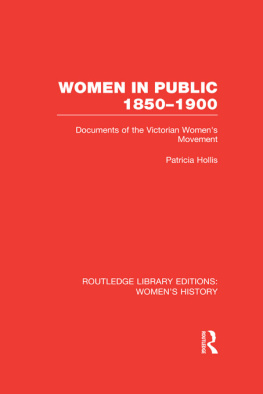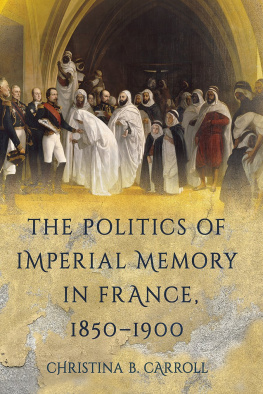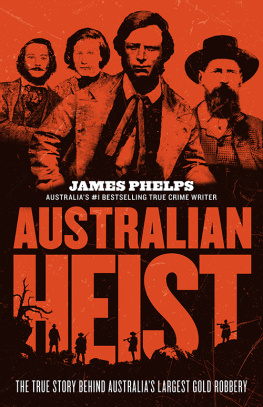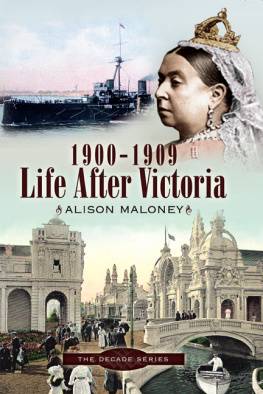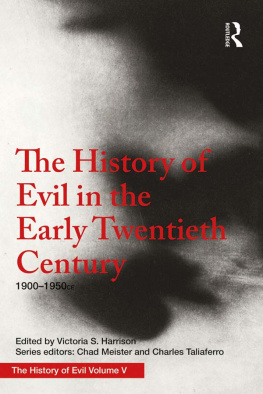Robert Llewellyn Tyler, 2010
All rights reserved. No part of this book may be reproduced in any material form (including photocopying or storing it in any medium by electronic means and whether or not transiently or incidentally to some other use of this publication) without the written permission of the copyright owner except in accordance with the provisions of the Copyright, Designs and Patents Act 1988. Applications for the copyright owners written permission to reproduce any part of this publication should be addressed to the University of Wales Press, 10 Columbus Walk, Brigantine Place, Cardiff, CF10 4UP.
British Library Cataloguing-in-Publication Data
A catalogue record for this book is available from the British Library.
ISBN 978-0-7083-2266-6
e-ISBN 978-1-78316-173-7
The right of Robert LlewellynTyler to be identified as author of this work has been asserted by him in accordance with sections 77, 78 and 79 of the Copyright, Designs and Patents Act 1988.
Preface
The Australian colony of Victoria, in the decades following the discovery of gold in the early 1850s, provides an attractive setting for an analysis of a Welsh immigrant community and the resilience of its cultural identity. Welsh-born immigrants in Victoria, besides the transitory populations of the seaport towns, were found in significant numbers only in a relatively few urban areas that emerged with the development of the gold mining industry. Most notable amongst these were the city of Ballarat and the adjacent township of Sebastopol.
The nature of the Welsh immigrant community in this area and its ability to retain its cultural integrity, in whatever form, is addressed with regard to a variety of factors. Settlement patterns, economic specialization and mobility, language, religious allegiance and adherence, cultural institutions and the conscious desire of many Welsh immigrants to cast off their old-world cultural traits are considered in relation to the continuation, modification and decline of a discernible Welsh ethnolinguistic community. This study also focuses on those responsible for defining Welsh identity and propagating Welsh social and cultural mores in colonial Victoria, analyses the components of that identity and establishes the extent to which the mass of the Welsh-born population conformed. The sometimes paradoxical loyalty to Wales and Britain and attempts to establish a purely Welsh settlement, as they related to a continued sense of Welsh identity, are also considered, as are activities not usually associated with Welsh migrants.
This book hopes to provide an analysis of the Welsh immigrant community in the Ballarat/Sebastopol area in the second half of the nineteenth century, explores all aspects of the Welsh immigrant experience and employs, in addition to qualitative evidence, a quantitative analysis at micro-level. By viewing all Welsh immigrants in one particular area over a set period of time, a clearer picture is obtained regarding the true nature of the community and the ways in which it changed.
A note on sources
As indicated, this book relies heavily on quantitative analysis and this is reflected in its source material. Settlement patterns were established with reference to official census reports and city directories. Occupational preference and mobility were identified largely from the information contained in death certificates in conjunction with city directories and rate books. In assessing the strength of the language amongst Welsh immigrants, data regarding date and place of birth along with time of arrival in the colony were also gleaned from death certificates. The quantification of denominational allegiance relied on information contained in the records of the Ballarat District Hospital, whereas levels of religious adherence were established from contemporary church records, primarily those of Sebastopols Welsh Calvinistic Methodist Church. The work on cultural institutions was predominantly based on qualitative material, but the changing nature of the eisteddfod was quantified using programmes as a source. The ideology of Welshness was addressed through a content analysis of the two Australian Welsh-language periodicals of the time, Yr Australydd and Yr Ymwelydd. Indeed, the Welsh press, as it existed in Victoria during the 1860s and 1870s, casts considerable light on several aspects of the migrant experience, with the initial predominance of Victoria, more especially the gold field settlements, and ultimately Ballarat/Sebastopol, in the reports of immigrant activity, clearly indicating the areas of greatest Welsh concentration at that time. In addition, the press provides, whether in articles, correspondence or reports of religious and social events, a wealth of information concerning community activity, language and culture retention and the vitality of cultural institutions. Beyond this, these periodicals also illuminate the ideologies of the Welsh immigrant community in general and of its leaders in particular, including assumptions made regarding identity.
The quantification of criminality levels amongst the Welsh relied on the census reports in tandem with the Central Register of Prisoners for Victoria. The analysis of marriage preference, and consequent family composition, depended, for reasons which will be made clear, on birth certificates. In addition, this work drew upon the host of contemporary Welsh and Australian newspapers, periodicals, journals, biographies, diaries, books, articles, letters and the reports of societies and institutions, both secular and religious. Detailed information is provided throughout, and a full list of both primary and secondary source material is included in the bibliography.
Much of the material used in this book was originally written in the Welsh language. All translations, unless otherwise indicated, are my own. In translating from the Welsh I have endeavoured to adhere, as closely as possible, to the original meaning, which has resulted in the use of some stilted and clumsy English.
Some of the material contained in this book has appeared in the following journals: Immigrants and Minorities, Llafur, Welsh History Review, The Welsh Journal of Religious History, Victorian Historical Journal and Local Population Studies.
Acknowledgements
If I were to include the names of all those who have been of assistance, in whatever way, in the researching and writing of this book the acknowledgements would merit a chapter in their own right.
I would first like to express my immense gratitude to my Ph.D. supervisor at the University of Melbourne, the late Jacqueline Templeton, for her invaluable advice, encouragement and patience. She is greatly missed. John Lack, my associate supervisor, was also tremendously supportive and deserves a special thank you for his noble attempts in untangling my convoluted prose. I am also especially grateful to Dilys Anderson and Mark Williams for their priceless efforts in correcting my Welsh translations; Willie Anderson for his sterling work in proofreading; Evan Hughes of Melbournes Welsh Church for providing access to his formidable personal collection and innumerable lifts to Laverton Public Record Office; Sion Aled Owen for throwing light upon what, for me, were the murky waters of denominational differences and the intricacies of Welsh-language poetry composition; William Jones of Cardiff University, for his advice and support; Kerry Cardell and Cliff Cumming of Deakin University; John Davies of Cardiff; Robert Doherty of the University of Pittsburgh; Jane Brion of Melbourne; Gareth Butler of Aberystwyth; Alun Howell, Susan Jenkins and Liam and Mary Sullivan of Cardiff; Peter Griffiths of Ballarat and my sisters, Jane Sullivan and Jaqueline Allen, and their families. I would also like to express my gratitude to Dot Wickham of the Ballarat Historical Society, Arthur Jenkins of the Sebastopol Historical Society and John Scarce at the Registry for Births, Deaths and Marriages, Victoria, for their generous assistance. I am also grateful to the staff at the National Library of Wales, Aberystwyth, the State Library of Victoria, the National Library of Australia, the Baillieu Library, University of Melbourne, and the Public Record Offices at Collins Street and Laverton, Melbourne, along with all those at the History Department, University of Melbourne, for their friendship and kindness.



